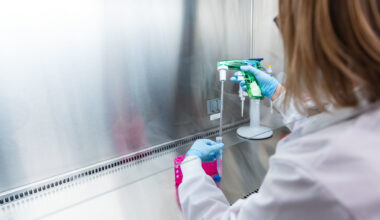Tetiana Poliakova is a PhD student in Dr. Cheryl Wellington‘s lab. In recognition of International Women’s Day, we caught up with Tetiana to learn more about her research, interests and the importance of women in science.
How did you become interested in neuroscience?
The brain has always fascinated me because it is the organ, we understand the least about and there is still so much to discover. In addition to my fascination with the brain, I am very committed to contributing to dementia research. Alzheimer’s Disease (AD) is the most common form of dementia, which affects over 597,300 individuals in Canada. By 2050, this number in Canada alone is expected to triple causing even more economic and societal burden. There is currently no cure for the disease and very few effective interventions, which is attributed mostly to our lack of understanding of the mechanism of AD development. More and more research is linking Alzheimer’s disease to the same risk factors that cause cardiovascular diseases. One of the most prominent cardiovascular risk factors, which is also a risk factor in Alzheimer’s disease, is high levels of low-density lipoproteins (LDL), also known as “bad” cholesterol.
What is your current research project?
Humans typically have 70-80% of their total cholesterol in LDL and the other 20-30% in high-density lipoprotein (HDL), or “good” cholesterol. Oppositely, mice, which are frequently used to model AD, have 80% of their circulating cholesterol in HDL. This prevents us from effectively studying how LDL contribute to the development of AD. The reason why mouse’s LDL:HDL cholesterol ratio is different from humans is that mice are naturally deficient in cholesteryl ester transfer protein (CETP).
My PhD project aims to increase the translational value of AD mouse model studies by using commercially available CETP transgenic mice, which have a higher LDL:HDL ratio, to understand how LDL affect amyloid and vascular pathologies in commonly used AD mouse models. We also hope to provide proof-of-concept data for future testing of CETP inhibitors as a potential intervention for AD.
What is your favourite fact about the brain?
Lipids constitute roughly half of the human brain’s dry weight making it the second most lipid-rich organ after adipose tissue. This is another reason why I am so enthusiastic about studying lipid metabolism, and the role of lipids in the brain and periphery in neurodegeneration and neuroinflammation.
Do you have a role model that inspired you to pursue science?
As a Ukrainian evacuee, I am passionate not only about neuroscience but also about human rights and bringing justice to my home country. My role model is Valentyna Radzymovska, a Ukrainian biochemist and physiologist, who published dozens of scientific publications despite political persecution by the Soviet Union and multiple migrations because of it. Many Ukrainian scientists and researchers have been displaced because of the war in Ukraine, and I hope one day to return to my home country to continue to advance science in Ukraine alongside talented Ukrainian and international researchers.
Why is it important for women to be represented in STEM fields?
It is important to have equal representation everywhere, so STEM shouldn’t be an exception. It also depends on what representation we are talking about. While women are well-represented in undergraduate and graduate classes, there is still a disparity at more advanced career stages. Bridging this gap in academia will ensure not only social justice but the benefit of scientific advancements since research shows that diverse groups tend to outperform homogenous groups in problem-solving.
What advice do you have for someone looking to do grad school or get involved in research?
Try it! Research in a lab (or behind a laptop) is very different from lab courses or textbooks. If you think you are interested in research or a research-based graduate program, get involved in research early on. Biomedical sciences have a lot to offer, so you can always try multiple labs and fields before deciding what sparks your curiosity the most.
What hobbies and extracurricular activities do you enjoy and are involved in outside of the lab?
In addition to being involved with the Ukrainian Student Union (USU) on campus, I’m honoured to chair a newly formed International Student Acceleration and Advising Committee in the Graduate Program of Neuroscience aimed to support and empower international students in their graduate journey. When I have free time, I enjoy yoga, sewing, and face timing my family in Ukraine.


